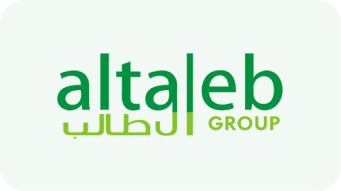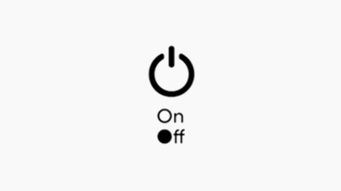
CHECK VALVE Wafer Dual Plate in fire fighting equipment: Vital Role in Protection and Safety
Fire extinguishing systems are vital systems that are designed and installed in various buildings and facilities to ensure safety and protection from fires. These systems rely on a set of equipment and tools that work together to control fires and save lives and property. Among these equipment, valves play a fundamental role in controlling the flow of water or other materials used in extinguishing. While the gate valve and the butterfly valve are known for their common role in these systems, there is another type of valve that plays a vital role in ensuring the efficiency of fire extinguishing systems, which is the dual-plate check valve (Wafer Dual Plate Check Valve). In this article, we will review the role of this type of valve in fire extinguishing systems, its features, how it works, and its importance compared to other types of valves.
What is a dual-plate check valve?
A dual-plate check valve is a type of check valve that uses two plates (or plates) to control the flow of liquids or gases. This valve operates automatically without the need for external control, opening when there is sufficient pressure to push the liquid or gas in the desired direction, and closing when reverse flow is attempted. This type of valve is characterized by its compact design and light weight, making it suitable for applications that require space saving and high efficiency.
The role of double-plate check valves in fire extinguishing equipment
Preventing backflow: Preventing backflow is one of the main roles of the double-plate check valve in fire extinguishing systems. In the event of a drop in pressure in the system. The valve prevents water or other materials from returning to the tank or source. Ensuring that the water continues to flow in the correct direction towards the fire area.
Pressure maintenance: It helps maintain the pressure within the fire extinguishing system. By preventing backflow, the valve ensures that the system remains at the required pressure, allowing for quick response in emergency situations.
Protecting pumps and equipment: This type of valve plays an important role in protecting pumps and other equipment in a fire extinguishing system. By preventing backflow, the valve reduces the risk of damage to pumps due to back pressure or water shocks.
Increased System Efficiency: The dual plate check valve ensures that water or other extinguishing agents flow effectively towards the fire area without losing pressure or flow. This increases system efficiency and ensures a quick and effective response in emergency situations.
Variety of Applications: Dual plate check valves can be used in a variety of applications in fire extinguishing systems, including automatic sprinkler systems, gas extinguishing systems, and foam extinguishing systems. This versatility makes them a flexible and effective option in a variety of conditions.
Comparing Wafer Dual Plate Check Valve with Gate Valve and Butterfly Valve
Gate Valve:
- A gate valve is used to control the flow of fluids by raising or lowering a gate within the valve.
- It has the ability to provide full, unobstructed flow when fully open.
- However, a gate valve is not suitable for preventing backflow, as it requires manual control to close or open.
Read more about The role of gate valves in fire extinguishing systems
Butterfly Valve:
- A butterfly valve uses a rotating disc to control the flow of fluids.
- It is lightweight and compact, making it suitable for applications that require space saving.
- However, the butterfly valve may not provide a completely tight seal like the double-plate check valve, especially in high-pressure systems.
In this article, you will find more details about The importance of the butterfly valve for fire extinguishing systems
Advantages of the Wafer Dual Plate Check Valve in Fire Fighting Systems
- Automatically prevents backflow: The double-plate check valve has the ability to automatically prevent backflow without the need for external control, making it reliable in emergency situations.
- Equipment Protection: The double-plate check valve plays an important role in protecting pumps and other equipment from damage due to backflow or water shocks.
- Increased System Efficiency: The double-plate check valve ensures that the system remains at the required pressure. Increasing the efficiency of the system’s response in emergency situations.
- Easy Installation and Maintenance: The double-plate check valve has a simple design that is easy to install and maintain, reducing maintenance costs and downtime.
- Versatile Applications: Double plate check valves can be used in a variety of applications in fire sprinkler systems, making them a flexible and effective option.
Video showing the installation of the CHECK VALVE Wafer Dual Plate
Disadvantages of the CHECK VALVE Wafer Dual Plate
Despite the many advantages of the dual plate check valve, there are some disadvantages that should be taken into account:
- Noise: In some cases, the dual plate check valve may produce noise due to the rapid flow of fluids or gases.
- Vibration: The dual plate check valve may cause vibrations in the system, especially when closing quickly.
- Noise and vibration: Noise and vibration can be an indication of a problem with the valve, such as damaged seals or deposit buildup. Regular maintenance helps detect these problems early and fix them before they become more serious.
- Corrosion: Corrosion is one of the main defects that can affect the performance of the valve. Regular maintenance includes inspecting the metal parts and applying corrosion-resistant materials when necessary, which reduces the effect of this defect.
- Loss of efficiency: Over time, the valve may lose its efficiency due to corrosion or damage to internal parts. Regular maintenance ensures that the valve remains operating at high efficiency, which maintains the performance of the entire system.
Importance of Check Valve Maintenance
Regular maintenance of the double-plate check valve is essential to ensure the efficient operation of the system and prevent potential failures. Although this type of valve is characterized by its high reliability and simple design. However, neglecting maintenance can lead to potential defects such as noise, vibration, and corrosion.
- Noise and Vibration: Over time, deposits or dirt can build up inside the valve, which leads to increased noise and vibration during operation. Regular maintenance, such as cleaning the valve and inspecting the internal parts. That helps reduce these problems and keep the valve running smoothly.
- Corrosion: Since the double-plate check valve operates in conditions that can be harsh (such as exposure to chemicals or salt water), the metal parts can be subject to corrosion. Regular maintenance includes inspecting the metal parts and replacing them when necessary. That extends the life of the valve and ensures reliable performance.
- Operational Efficiency: Regular maintenance ensures that the valve operates at high efficiency, preventing pressure loss in the system and maintaining a quick response in emergency situations. Regularly checking the seals and plates ensures that there are no leaks or malfunctions that affect the system’s performance.
- Reduce costs: Preventive maintenance helps avoid major repairs or replacing the valve entirely, reducing costs in the long run. Early detection of problems also prevents damage to other equipment in the system, such as pumps or pipes.
- Safety: In fire extinguishing systems, an efficient valve is a critical component in ensuring safety. Regular maintenance ensures that the valve is operating properly when needed, reducing the risk of system failure in an emergency.
Conclusion
In conclusion, the double-plate check valve plays a vital role in fire extinguishing systems. Due to its ability to automatically prevent backflow, protect equipment, and increase system efficiency. Despite some drawbacks such as noise and vibration, the advantages it offers make it an ideal choice in many applications. When designing fire extinguishing systems, engineers and designers should consider the use of lt. The double-plate check valve as an essential part of the system to ensure efficiency and reliability in emergency situations.


























